by David M. Roth
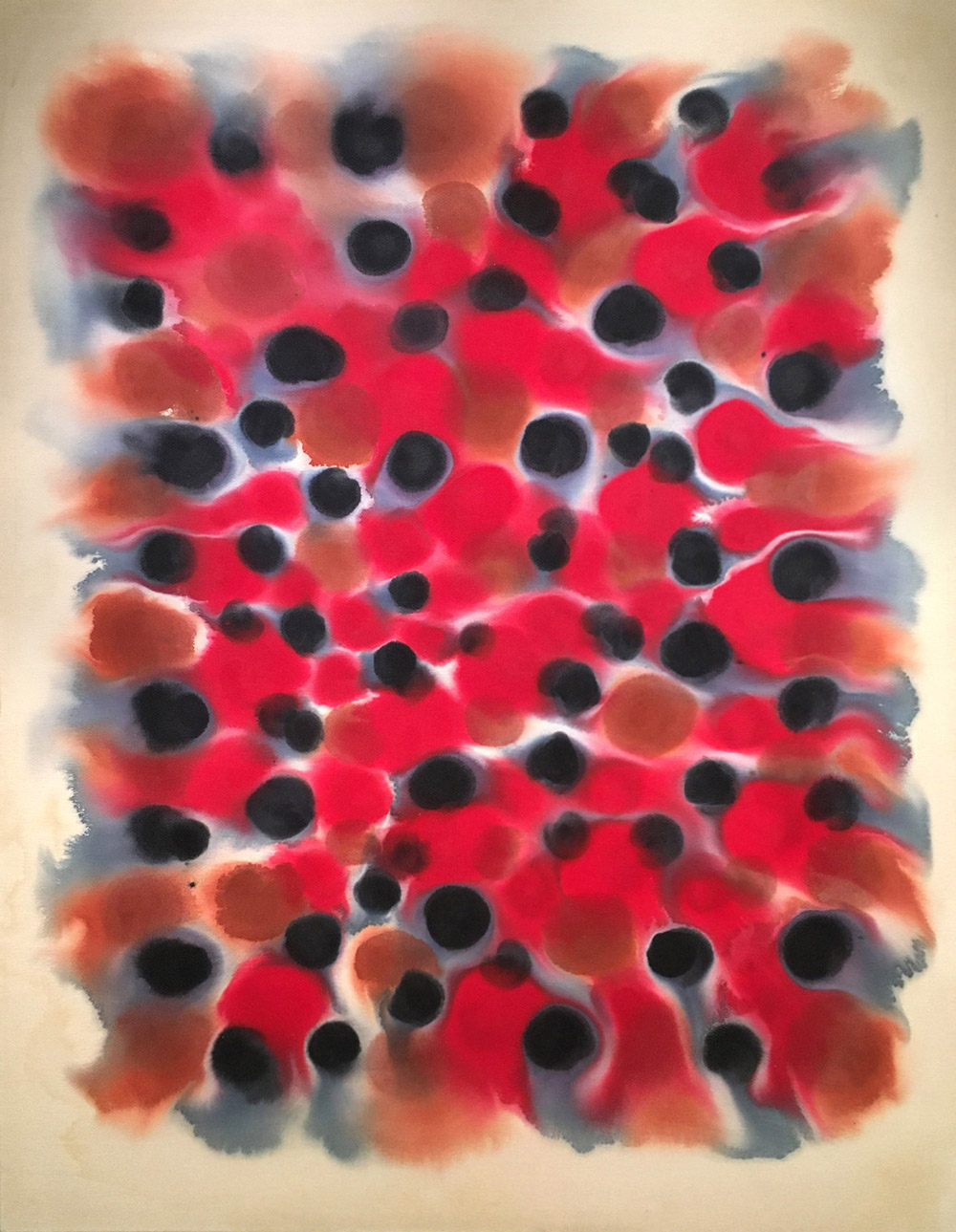
For much of the 20th century, the evolution of Modernism played out as a tug-o-war between abstraction and representation. It mattered little that such designations were merely points on a continuum. Each side had proponents and detractors claiming the moral high ground. Today, their arguments seem quaint thanks to the emergence of artists who either renounced such distinctions, as Philip Guston did when he took up figuration, or by embracing both approaches as Frank Bowling did in his early works depicting his family home in Guiana.
For Black artists facing institutional neglect, a domineering racist culture and a host of other seemingly intractable problems, these options weren’t always available due to the widespread belief that representation (i.e., Social Realism) was the best, if not the only way to express and mobilize effective resistance. Abstraction, according to this line of thinking, articulated most forcefully by the Black Arts Movement, was self-indulgent and therefore counterrevolutionary.
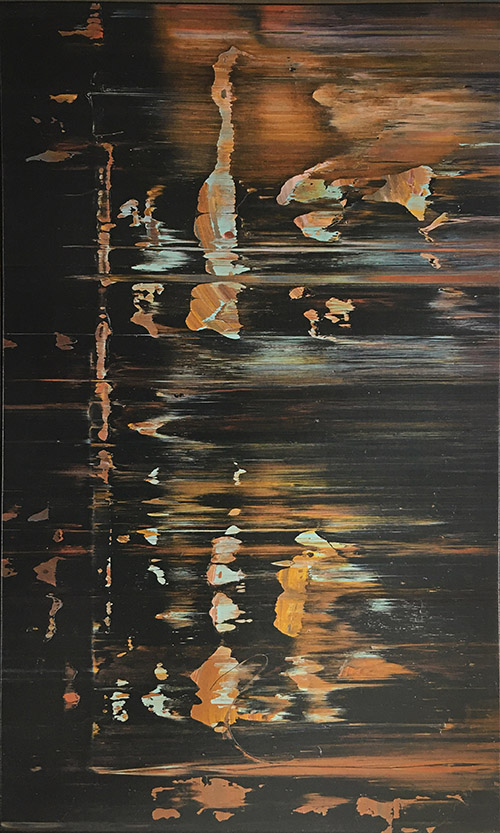
Black Artists in America: From Civil Rights to the Bicentennial, the second installment of a three-part exhibition organized by Professor Earnestine Jenkins for Dixon Gallery and Gardens in Memphis, splits the difference. Pulling from two collectives of the period, the Harlem-based Spiral group and AfriCOBRA, based in Chicago, it registers both approaches in a star-studded display of works made between 1965 and 1976 – a tumultuous time defined by war, assassinations, racial unrest, riots, political backlash and an upwelling of Black pride.
The surprise in this exhibition, overseen by Francesca Wilmott for its run at the Crocker Art Museum, is that abstraction holds sway, reflecting a view held by many Black artists that social reality and personal expression needn’t be in conflict. Rather, they’re sides of a coin, necessary components of liberation — personal and political. While parts of the show reveal hard-hitting (and sometimes brutal) depictions of Black life, they’re far overshadowed by paintings that align more closely with Abstract Expressionism, a movement whose history often gives short shrift to Black artists or omits them entirely. As such, Black Artists in America joins many similarly oriented exhibitions as an overdue corrective.
Evidence validating this effort accrues like a succession of explosions — in canvases by Kenneth Victor Young, Howardena Pindell, Alma Thomas, Norman Lewis, Frank Mayhew, David Hammons, Frederick J. Brown, Jack Whitten, Sam Gilliam, Beauford Delaney, Merton D. Simpson and Ed Clark. None reflect or express a specific ideology, yet certain themes reoccur in the artists’ comments about their work. Lewis, finding personal acts of political protest far more effective than artmaking, strove in his practice to create a “visionary world.” Delaney saw abstraction as a way to penetrate something more profound…than the rigidity of a form.” Bob Thompson, an abstract-figurative artist, called his hybrid approach a “metamorphosis into freedom,” a characterization that applies to much of what’s on view, be it abstract or figurative.
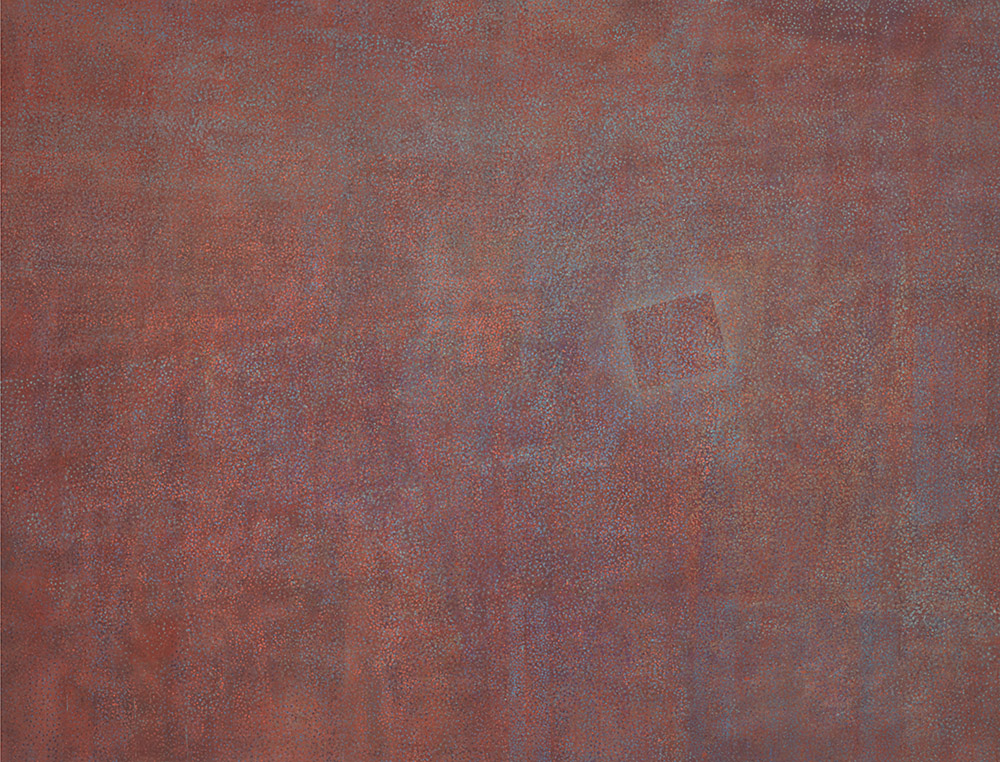
Young’s canvas, Openness (1972), the first you see upon entering the exhibition, shows billowing cloud-like formations encircling bleeding blue-black dots that resemble bacteria multiplying in a petri dish. He achieved these effects with sponges and staining – a common practice among painters of the Washington Color School, of which he was a member. Directly opposite, Howardena Pindell’s untitled canvas from 1972, a pointillist maze of red and blue dots embedded in a shadowy red ground, hints of cosmic energies sensed from afar. Alma Thomas’ quilt-like painting, Etude in Color (1971), a jagged mass of warped geometric shapes aligned in vertical bands, has light spilling through the crevices, reminiscent of canvases Sam Francis painted early in his career, when he was in Paris. Sam Gilliam, another Washington School artist best known for unstretched paint-stained canvases draped across floors or walls, is represented here by a shimmering, iridescent 1970 watercolor.
On either side of it stand two masterworks: Jack Whitten’s Lapsang (1974) and Richard Mayhew’s Symphony (undated). The first features squeegee pulls interrupted by glitchy-looking shapes, prefiguring by decades the widespread use of such forms by digital artists. Mayhew’s painting is, ostensibly, a landscape, but it’s only identifiable as such by a wispy tree in the upper left corner. The rest is all murky atmospherics, a miasmatic swamp of greens, pale blues and neutral shades, so dark it’s almost impossible to read. David Hammons’ untitled enamel-on-masonite painting, a highly atypical work, is one of the show’s most energetic – and – erotic paintings. Rendered in gold and black, it shows a phallic shape emerging underground from what looks like a frothy pool of liquid.
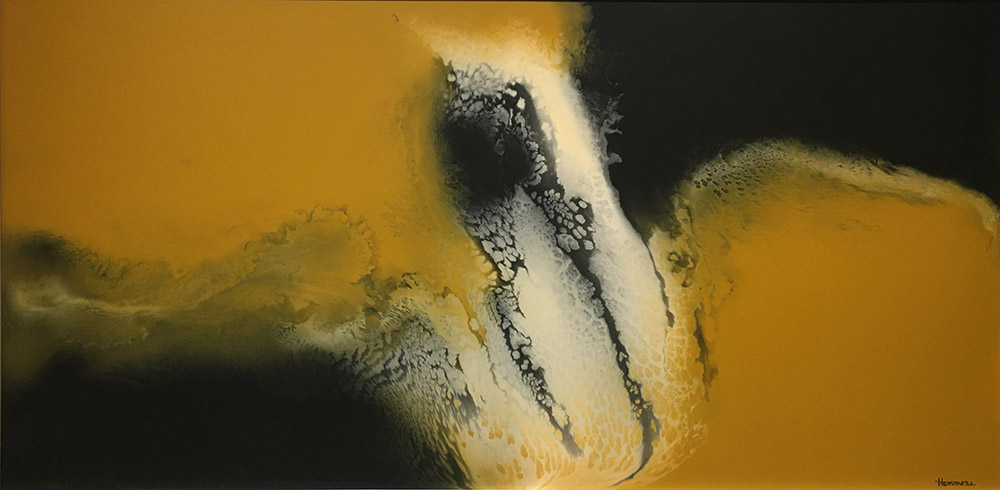
Deeper into the show, where abstraction and representation begin to merge, come other revelations—and sharp contrasts, too—like Beauford Delaney’s Untitled (Abstraction) from the late 1950s: a tangle of animated semi-circular gestures set against a van Gogh-yellow ground. It lights up the room. So, too, does Ed Clark’s untitled painting from 1962; with its broad, sweeping brushstrokes, it stands with the best of Franz Kline.
None of these works display what might be called an identifiable Black aesthetic. At this remove, their sensibilities reflect universal trends in abstract painting that were either well-established (i.e., gestural abstraction) or newly invented and fast-evolving, like those employed by Gilliam and Whitten, innovators both.
In contrast, paintings from the AfriCOBRA group, which appear at the midpoint of the show, exhibit a distinct Black aesthetic, defined by figures wearing Afro-dos, and swathed in African fabrics, the latter rendered in bold colors with “rhythmic linear effects, flat patterning, form-filled composition and picture plane compartmentalization,” as Jeff Donaldson, one of the group’s founding members, described the approach. Launched in 1968 as COBRA (Coalition of Black Revolutionary Artists), the group later changed its name to AfriCOBRA (African Commune of Bad Relevant Artists), a shift intended to better express “the meaning and sacrifice of our struggle.”
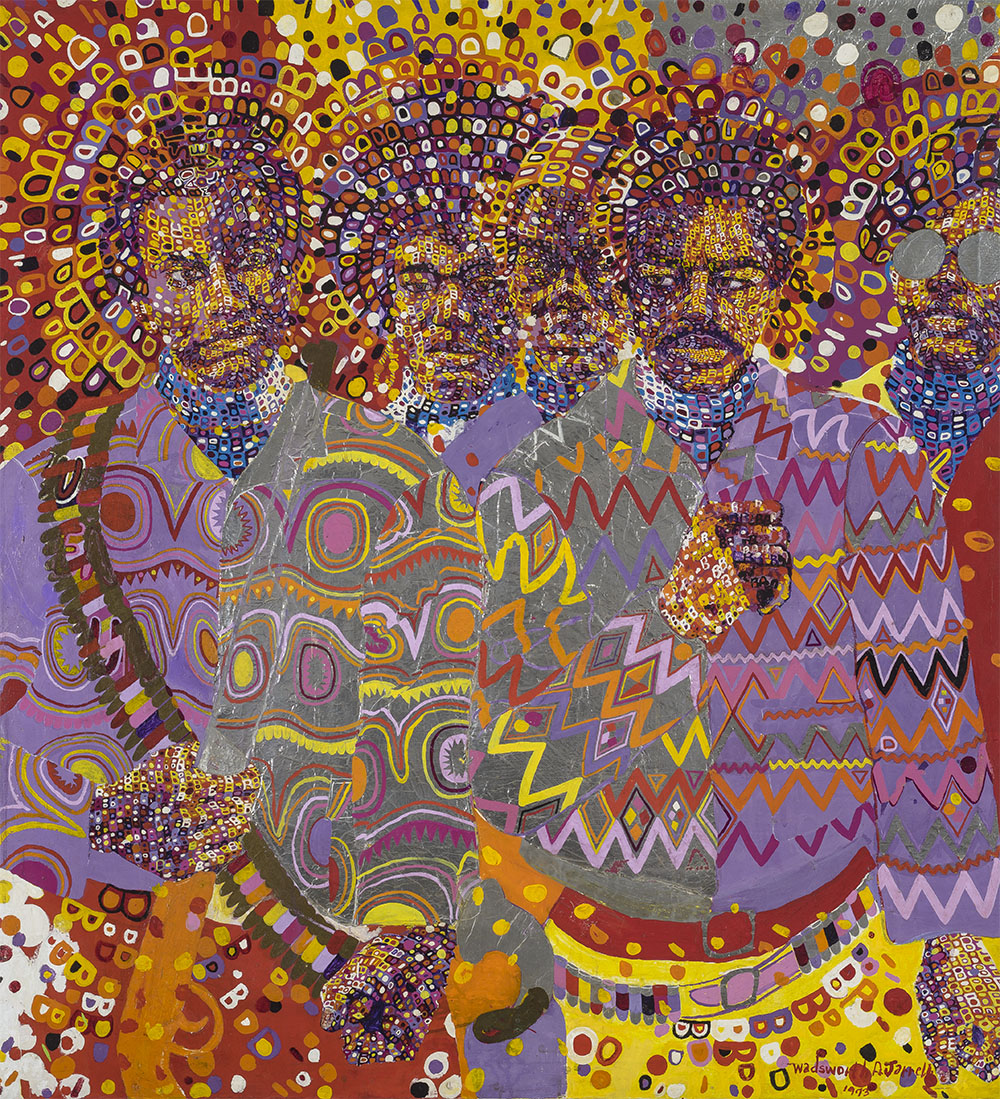
No picture expresses it more engagingly than Wadsworth Jarrell’s Liberation Soldiers (1972), a psychedelic image of three men wearing bandoliers. It features African textile patterns painted on aluminum foil at the center surrounded by forms resembling pop-top can openers, deployed in a manner similar to how Cluck Close used amorphous paint squiggles to construct photorealistic portraits. The other knockout piece from this segment of the exhibition is Donaldson’s Amos and Andy (1972). Following a tradition of editorial satire dating to early 20th century, the artist transforms a racist caricature into an image of Black militancy. Look closely at the space between the two men pictured, and you’ll see gun barrels pointed outward. Both paintings call to mind famous photographic portraits from the same period of Black Panther Party members by Gordon Parks, Pirkle Jones and others.
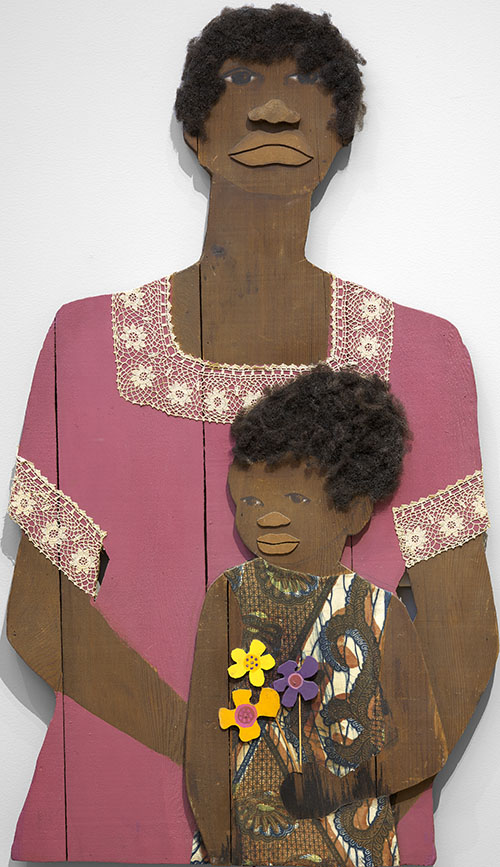
The final segment of the exhibition reveals what the fight was all about, with works that divide more or less equally between themes of Black strength and family unity and depictions of the forces arrayed against it. Collagist Romare Beardon and sculptor Marie Johnson Calloway are each represented by powerful mother-child portraits. Johnson’s 3-D, wall-mounted wood panel, adorned with fabric and hair, delivers a punch nearly equal to that produced by Duane Hanson’s realistic figurative sculptures. (Lest you think that comparison far-fetched, it’s worth remembering that one of Hanson’s earliest works, Race Riot (1971-72), showed a white cop beating a Black man.) As for what ignited such fights and their artistic responses, one need only consult pictures by Benny Andrews, The Poverty of it All (1965) and Beholden (1963), each showing the pain inflicted by white supremacy.
The latter is expressed searingly in a civil-rights-era painting by Cliff Josephson titled Superman (1966). It shows a bloated skeletal white man with a gas can at his feet holding a crucifix, a rifle, a noose, chains, matches and a whip: the toolkit of American racial violence. He stands before a backdrop of two flags: a confederate banner with “stars” made of KKK hoods and an upended American flag with white-painted pennies standing in for stars: a sinister inversion of the symbolic significance attached to the visage of Abraham Lincoln.
Lastly, there’s Merton D. Simpson, a legendary dealer in African artifacts whose spirit and legacy (detailed at length in the exhibition catalog) helped shape this exhibition. His painting, Confrontation (#1A) (1957/1965), summarizes this chapter in American history with two African masks jammed together, one black, the other white. Each bares its teeth, like animals girding for battle.
If ever an exhibition encapsulated today’s polarized historical moment, this one, with its colliding visions of hope and freedom, violence and despair, does it like none I’ve seen in recent memory. Its sequel, if we’re lucky enough to get it, can’t arrive soon enough.
# # #
“Black Artists in America: From Civil Rights to the Bicentennial” @ Crocker Art Museum through May 19, 2024.
About the author: David M. Roth is the editor, publisher, and founder of Squarecylinder, where, since 2009, he has published over 400 reviews of Bay Area exhibitions. He was previously a contributor to Artweek and Art Ltd. and senior editor for art and culture at the Sacramento News & Review.